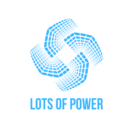The best user experiences aren’t designed in a vacuum, and they’re not always designed in the same room, either.
At Composite, we’re a remote-first UX design agency with team members spread across time zones. And yet, we deliver work that feels unified, intentional, and deeply collaborative. We’ve developed a remote UX workflow that keeps us aligned creatively, strategically, and personally, no matter where we are.
Table of Contents
ToggleStart With Shared Language and Strategy
Before we dive into Figma or workshop flows, we align on something even more important: shared intent.
That means:
- Defining UX goals tied to business outcomes
- Aligning on tone, priorities, and user needs
- Mapping out technical and timeline constraints early
- Creating a shared vocabulary for design language and hierarchy
We also lean heavily on existing brand guidelines and style guides to ensure consistency across teams. These documents act as a north star—especially when multiple disciplines are collaborating remotely. They help designers, developers, and content strategists stay aligned, even when working asynchronously.
Remote teams thrive when there’s structure behind the scenes. That’s why we build from systems, so everyone can move independently without drifting off-brand.
Want to see how we structure for scale? Read how we build modular design systems in Webflow.
(Source)
Run Design and Content in Parallel
In a traditional setting, UX design often happens in a linear flow: discovery → wireframes → content → dev. In remote teams, that model creates bottlenecks.
Instead, we run content and UX in tandem. While our designers wire up flows, our strategists and copywriters are already thinking through hierarchy, messaging, and microcopy. We prototype with real content as soon as possible so nothing feels like filler.
That overlap reduces miscommunication and prevents painful rewrites later.
Use Tools to Bridge Time Zones, Not Just Manage Them
Remote work doesn’t mean less collaboration. It just means more intentional collaboration.
We use tools like Figma, Notion, and Loom not just for handoff, but for dialogue. That includes:
- Screen recordings to explain decisions asynchronously
- Inline comments to clarify rationale and flag dependencies
- Prototypes that simulate real user flows for better feedback
- Shared design systems that keep everything consistent, even across clients
It’s not about more meetings. It’s about smarter handoffs and richer documentation.
Trust (and Empower) Each Discipline
The best remote UX teams don’t just pass files, they pass ownership.
At Composite, our user experience design process empowers each role to lead where they shine:
- UX designers focus on clarity, hierarchy, and interaction
- Content strategists shape story, pacing, and readability
- Developers flag feasibility early and think through responsiveness
- Project leads keep feedback loops short and structured
That cross-functional trust lets each person go deep without stepping on toes.
Build Feedback Into the Workflow
We don’t wait for formal review rounds to course-correct.
Instead, we build in regular async check-ins and real-time critiques. Because we all work remotely, our feedback culture is more visible and more inclusive. Designers aren’t just showing polished mockups. They’re showing thinking in progress, inviting input from the team early.
And because our team includes folks with backgrounds in development, content, and strategy, we spot issues that siloed teams might miss.
See how we address ambiguity in the design process—especially when teams are remote.

Stay Human, Even Online
Zoom fatigue is real, and so many of us have felt it while doing remote work. But remote UX work doesn’t have to be robotic with the right mindset.
We make space for creative drift, shared playlists, and even the occasional chaotic Slack thread. We know that thoughtful design starts with trust, and trust comes from knowing who’s on the other side of the screen.
So while we might not share an office, we share everything that matters: values, vision, and an obsession with great user experience design.
TLDR
Being a distributed team hasn’t held us back. It has helped us grow as a team and as individuals. As a UX design agency with roots in NYC and collaborators around the globe, we’ve learned how to keep creativity flowing, feedback meaningful, and design consistent across distance.
Remote teams can build cohesive, impactful products. You just have to design your process as intentionally as your product.






